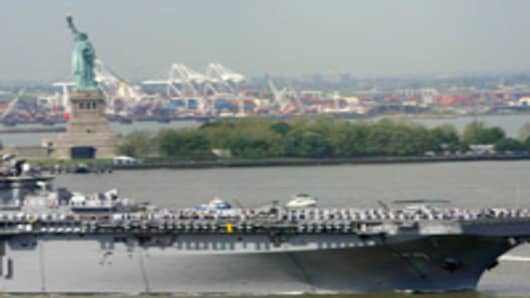Risk-on is going out - of fashion. Here are suggestions for safe haven currency trades, from the experts.
Look for three key features, says Rebecca Patterson, chief markets strategist for J.P. Morgan Asset Management, Institutional.
"Ideally you want a country with a small deficit (as percent of GDP) or surplus," she told me. "A surplus means the country does not require net capital inflows to offset trade-account outflows. The currency is relatively less vulnerable to risk appetite shifts." Examples: most emerging Asian countries, Switzerland, Norway.
Also, "Usually, low-yield currencies "fund" higher-yield currency positions in risk-on scenarios," Patterson says. "These same low yielders benefits in risk aversion when 'carry trades' are unwound."
Finally, Patterson says, "Safe haven currencies are usually liquid; places of refuge in times of uncertainty." The dollar has a current account deficit, of course, but also low yields and a VERY liquid bond market.
Patterson's top risk-aversion picks right now:
- U.S. dollar- except when risk aversion is the result of high oil prices. Yes, there's a current account deficit, but yields are low and the bond market is highly liquid.
- Swiss franc - "especially when Europeans are looking for safe havens."
- Yen though be careful about local debt dynamics and finding the right entry point, given its recent strength.
- Emerging Asian currencies other than India - Patterson's favorites right now are the Chinese yuan and the Singapore dollar.
- Norwegian krone there's a close relationship to oil, but otherwise the safe-haven fundamentals are solid.
Then there is the question of when to put on these trades. Here's what the analysts at Deutsche Bank have to say about that:
"The clock is ticking on the long risk appetite trade," wrote Alan Ruskin, Deutsche Bank's global head of F10 foreign exchange strategy, in a research note. Using a Deutsche Bank measure of risk appetite, he calculated that "Markets have been in risk seeking mode for 238 days, 43 more days than the median of continuous risk seeking periods since 1998." Ruskin expects the end of QE2 to demarcate a real shift in risk sentiment, or at least "the end of a tailwind for global risk appetite."
Sounds like it's time to get moving.
Tune In: CNBC's "Money in Motion Currency Trading" airs on Fridays at 5:30pm.
"Money in Motion Currency Trading" repeats on Saturdays at 7pm.



